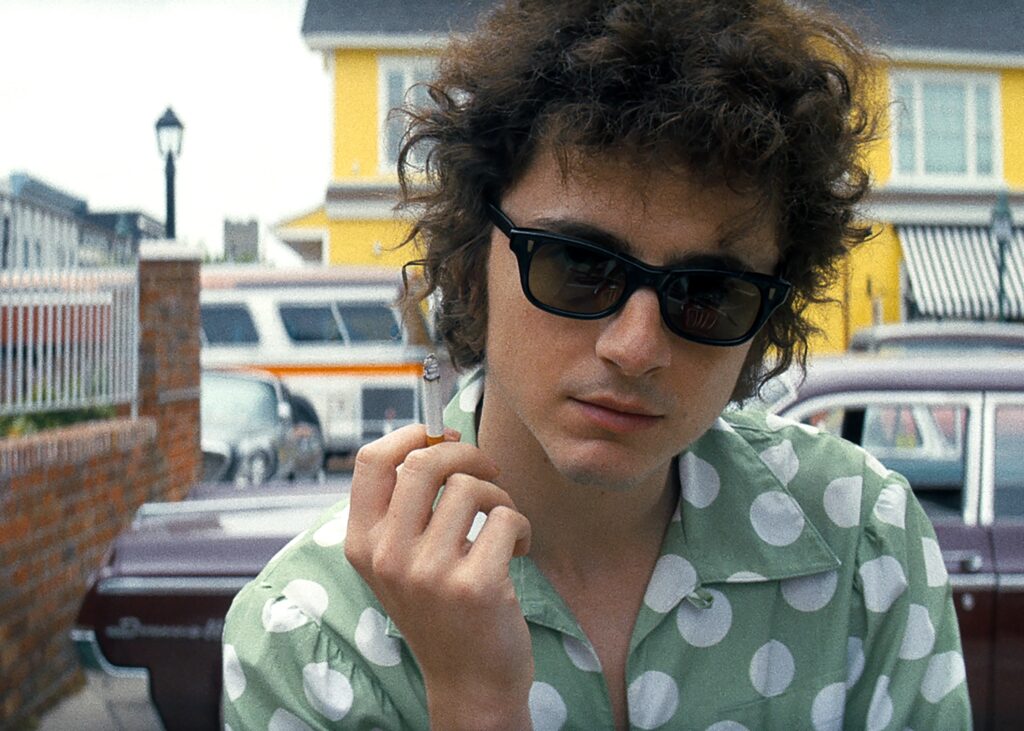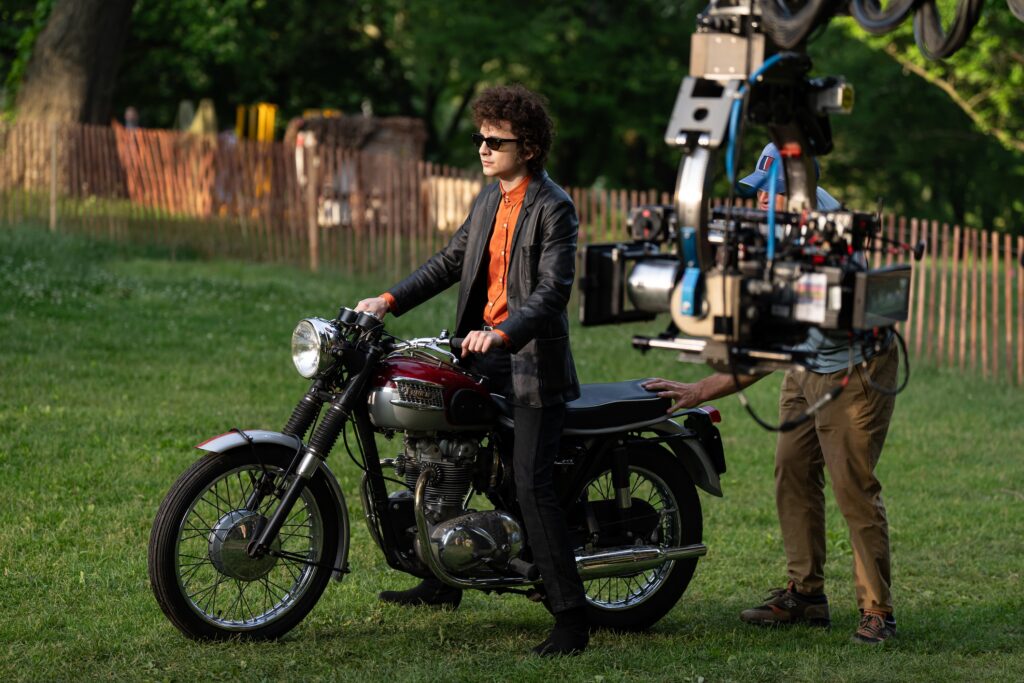
Phedon Papamichael is one of the best cinematographers in the world. He is well known for his work with directors Alexander Payne (Sideways, Nebraska) and James Mangold (Walk the Line, Ford v Ferrari). A Complete Unknown is the story of legendary singer, and songwriter Bob Dylan, who is one of the most iconic cultural figures in American history. Expertly directed by Mangold, starring Timothée Chalamet as Dylan, and lensed by Papamichael. The film is nominated for several Academy Awards and Papamichael is nominated for the ASC Award for Best Cinematography. He recently spoke to Immersive via Zoom.
[This conversation has been edited for clarity and context]
Tell me a little bit about how you got involved with this specific project. You’ve worked with director James Mangold several times.
This is my seventh collaboration with Jim. I heard about this project when we were in Toronto with Ford v Ferrari. Timmy was attached already. COVID stalled things, then we did a movie in between which was great because this movie never went away. This gave Timmy a lot of time to become as good as he is in the film, which is astonishing.
And the production had a few more starts and stops along the way…
We started prep and then the writer’s strike happened. Which gave us even more time. We had scouted New York for locations and decided to shoot in Hoboken to be our Greenwich Village.
We all had the images in our heads. Arianne Phillips had already started getting the actors in costumes. We had this warmup and had them all prerecorded. Then after the strikes were over we all came back and it was good for the art department. We had a lot of time to research… Production Designer François Audouy put together an incredible lookbook.
Is Bob Dylan a personal favorite for you?
Yes. I was born in ’62. Growing up in Germany the hippie culture stuck around for a while. So I grew up very much under the influence of that. I had a childhood friend who was just absolutely obsessed, he would walk around with a harmonica rig and sing Dylan songs.
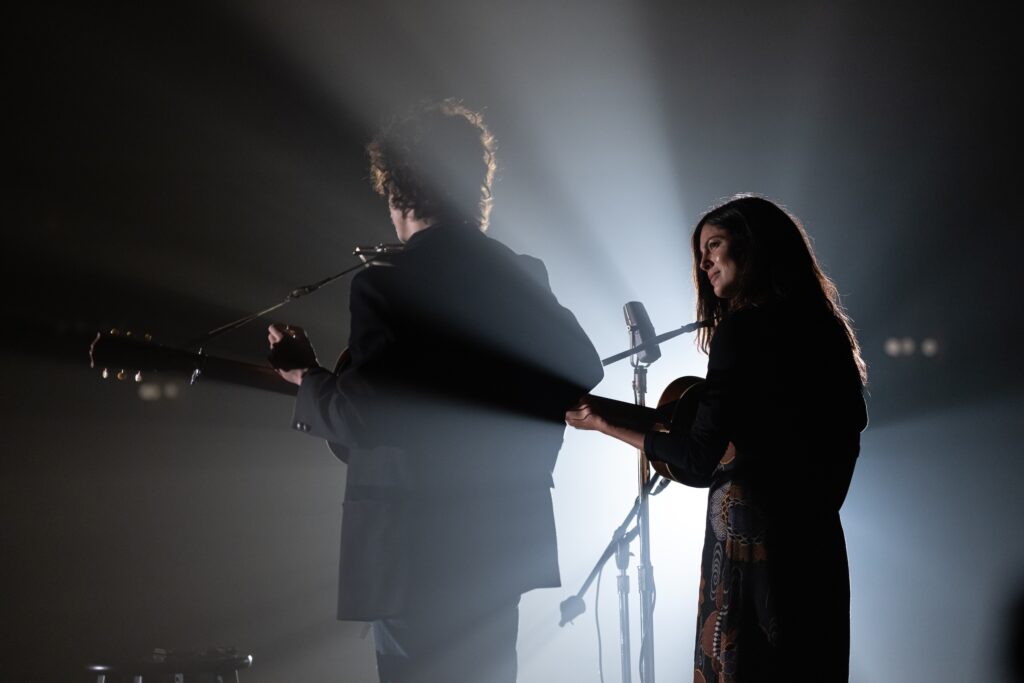
There is so much iconography with Dylan, one image that stands out is the silhouette of him with the blue background… the hair is unmistakable…
When we composed that shot during the Philadelphia concert, you have Joan Baez and Bob Dylan silhouetted by these cross lights. It is a direct recreation of a photograph that exists. When I was framing the closeup, I said to myself - wow.
Then of course you also captured intimate moments out of the spotlight…
We recreated his apartment and spent a lot of time on all the little details. His record player, his espresso machine, his desk, his artwork, everything… It was fun for Timmy also, because he would come and we would just let him explore this space and discover the character. He became the character and it was very inspirational for us. We did the same work for his studio as well.
What were some other inspirations, outside of the scope of Dylan, being a period piece…
Francois was very helpful in creating a lookbook in pre-production and put together all these images just from the fifties, and sixties… Saul Leiter, William Eggleston, and a lot of color photography of New York streets and textures. So that became kind of my guideline when working with the colorist. Movies as well, The French Connection and The Conversation were inspirations.
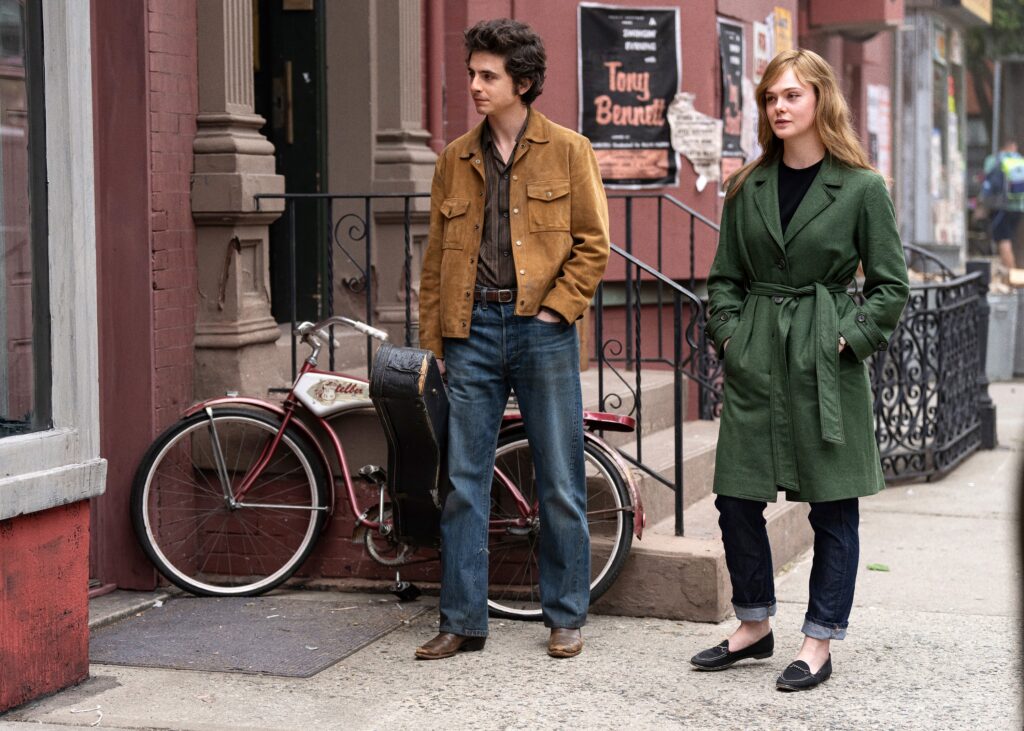
What kind of camera did you use?
The Sony Venice 2, which is first time I’ve used it. I wanted to shoot at a much deeper stop to have much more depth of field. I discovered from my testing that this camera rate at a very high sensitivity.
Lenses?
We had custom anamorphic lenses built by Dan Sasaki, using the oldest front element glass he could piece together. He created a new hybrid that also allowed us to do close focus. Jim always likes to be physically close shooting the concert scenes. When we tell our stories, we like to put the audience in the moment. It’s something we discovered on Walk the Line, how to shoot it where you feel like you’re literally on stage with him.
Timothée Chalamet played Willy Wonka, Paul Atreides, and Bob Dylan back to back. That range is uncanny, especially as Dylan, who is hard to pin down, a mysterious figure even after watching a biopic about him…
I knew I’d admired him in other roles, and I’ve seen his range and his intensity. In this, he comes across as very focused. I must say all of us, the entire crew, every grip, every focus pillar, we’re like man, we better get this and be, stay fluid and reactive and like, not get in the way technically.
I’m trying to do minimal lighting, be very natural, and use all just practicals, period, practicals even on stage. I had a very instinctive camera operator also who could just react and flow and know when to go in for a close-up and when to rotate around the back.
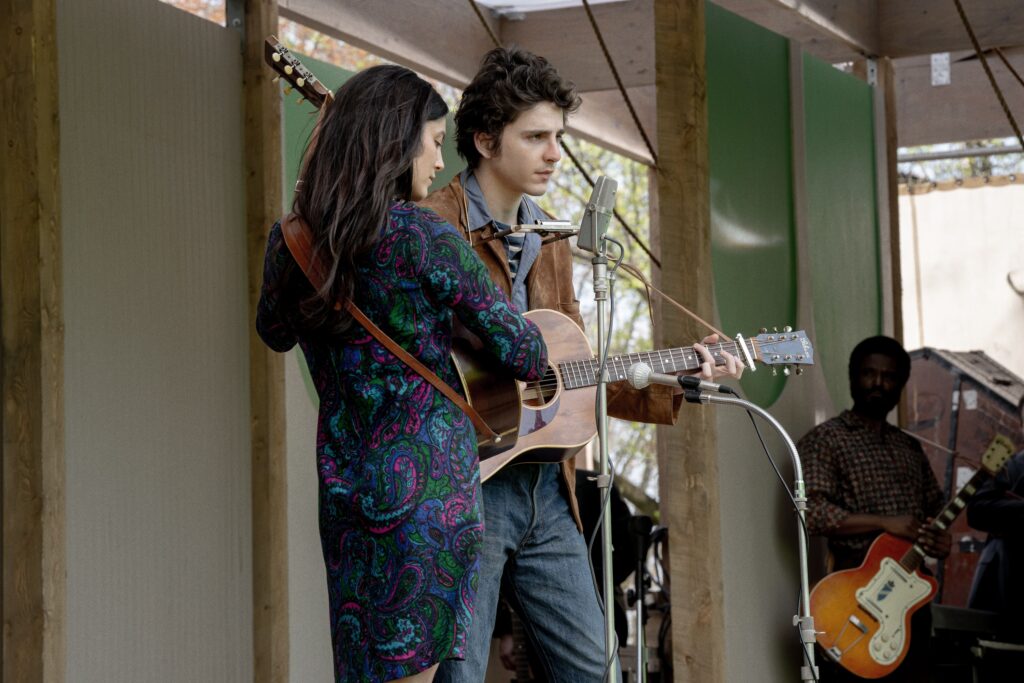
What were some unique challenges with this project? Are there any particular scenes that were harder to shoot than other scenes?
It’s hard to shoot on the streets a period movie. Though most challenging scenes were the day exteriors where it’s a performance at Monterey or Newport. People always think, oh, big night exteriors are hard. I can light them. I can control everything. During the day the sun can shift radically while you are shooting. That’s the stuff that’s becomes quite challenging because then it’s all about planning and what order do you shoot things.
We also gotta shoot the crowd when we have all the extras with all the wide shots. How do you maneuver through the day of clouds going in and out? Start in the morning in the sun and it’s raining in the afternoon for three hours. That’s always been the most challenging.
What’s it like being on the other end of this now?
We’re very happy. Jim is very happy. I’ve seen it in many venues with an audience and the reactions have been great. I was always hoping that this movie would spark interest in Bob Dylan for Gen Z people. But also just inspired to express themselves through art, whether it’s poetry, music, cinema, painting…
Some people have told me it’s their favorite movie of the year. Some have told me it’s their favorite movie of all time, so that’s obviously a lovely thing to experience.
A Complete Unknown is still playing in theaters.


